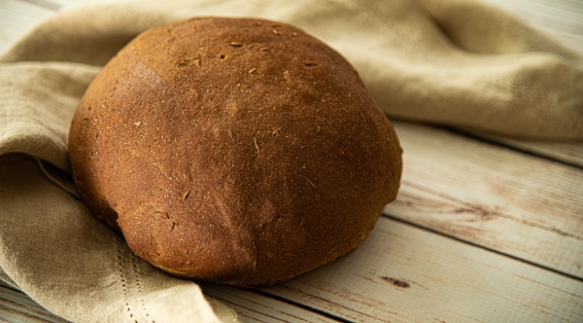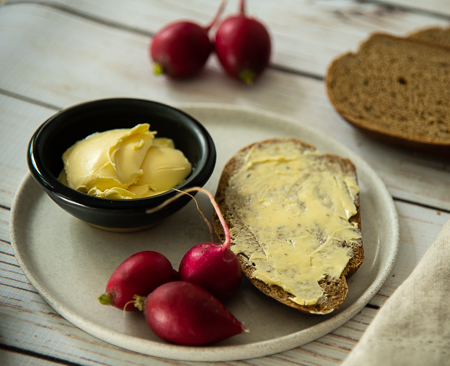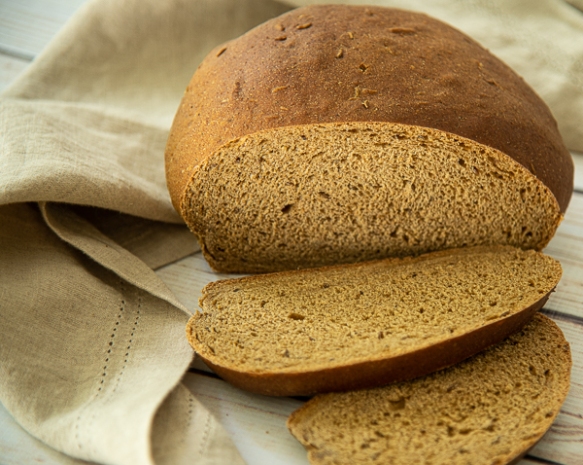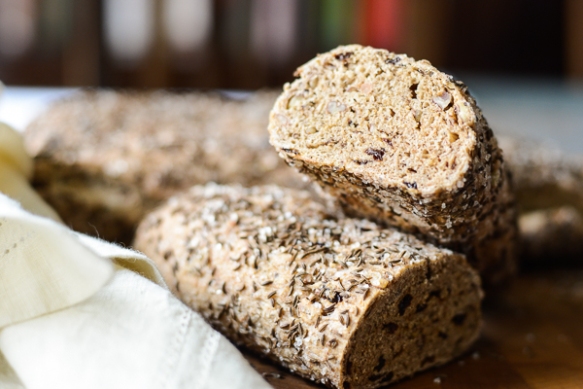
I learned to bake bread while living in El Salvador, from my supervisor’s wife, who learned the skill out of necessity when they lived in Nepal. It’s a small world, isn’t it? She hosted some of the Embassy personnel at her house for bread baking workshops. We would get all the bread doughs ready in the morning, then hang out at the pool drinking ice cold Presidente beer until it was time to bake. Somehow the bread got made in spite of the copious amount of beer that was consumed.

I came across this recipe while sorting through my card file of old favorites. I used to make it all the time in El Salvador, and realized I had not made it in many years. I lived in a high rise apartment building along with a lot of the other military personnel who were assigned to the U.S. Embassy at the time. Since I got off work before my Army buddies, I became the defacto cook for all of us. They bought the groceries, and I did the cooking. I thought it was a pretty good deal.

When the commissary started carrying frozen corned beef briskets, we decided it was time for Reuben sandwiches, one of my favorites to this day. Somehow we managed to locate almost all of the necessary ingredients. The only problem was where to find the rye bread for the sandwiches. Well, I’ve never been the type to shrink from a culinary challenge, and rye bread was no different. This is the rye bread recipe I used.

Swedish Rye Bread
2 Loaves
This Rye Bread is a little on the sweet side, but it goes with everything from corned beef to just butter and jam or smoked salmon, Scandi style. I’ve provided the baking time; however the best way to tell if the bread is done is to use an instant read thermometer. You want the bread to be between 205 and 210 degrees. Always let freshly baked bread cool completely before slicing into it.
1 packet or 2 1/4 teaspoons yeast
1/4 cup warm water, 105-110 degrees
1 teaspoon sugar
1/4 cup brown sugar
1/4 cup molasses
1 tablespoon salt
2 tablespoons shortening
1 1/2 cups hot, but not boiling, water
2 1/2 cups rye flour
3 tablespoons caraway seed
3 1/2 – 4 cups all purpose flour
Soften the yeast by placing it in a small bowl with 1/4 cup water and 1 teaspoon sugar. Stir and set aside until foamy.
In the bowl of a stand mixer combine the brown sugar, molasses, salt, and shortening with the paddle attachment. Add hot water and stir until sugar dissolves. Note: the shortening will not completely dissolve in the liquid. Cool until lukewarm to touch, then add the rye flour and beat well. Add the yeast mixture and the caraway seed and mix well. Switch out the paddle with the dough hook. Start adding all purpose flour about a half a cup at a time and mixing it in before adding more. Add enough of the flour to make a moderately stiff dough. The dough will be sticky but not so stiff that the hook cannot get through it. Continue kneading the bread dough in the mixer until the surface is smooth and satiny. This should take about 5 minutes or a little less. Place the dough into a lightly greased bowl, turning it over once to oil the surface. Cover and let rise in a warm place until doubled in size, about 1 1/2 hours.
Punch down the dough and turn it out onto a lightly floured surface. Divide it into two portions and shape each into a smooth round loaf. Place both loaves on a half sheet pan, cover, and let rise until doubled in size, about an hour. Bake at 375 degrees 25-30 minutes. Place foil loosely over the tops for the last 10 minutes to avoid over baking. Cool on a wire rack.




